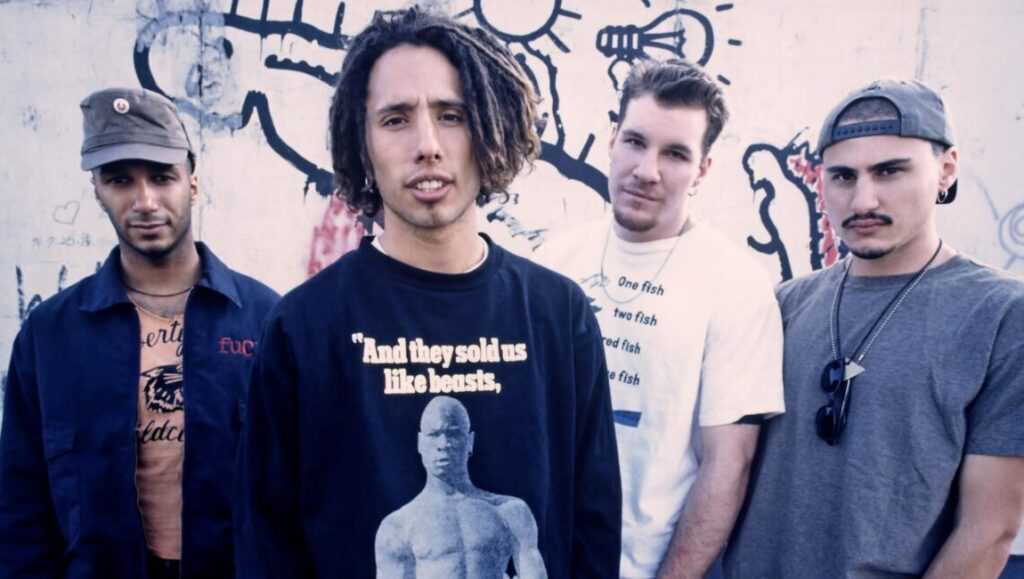In late 1992, a newly formed Rage Against the Machine released their self-titled debut. In doing so, they created something that was considered unmarked territory up to that point: They successfully merged the polar opposite sound of hard-rock and metal with the style and lyrical delivery of hip-hop — on a full length LP (nearly a decade before the subgenre known as nu-metal — or rap-metal — was born.) When listening to this album the first word that comes to mind is rebellion. Put yourself in the mind of a Los Angeles resident in 1992; on the heels of the Rodney King police brutality beating and the subsequent L.A. riots, the scope begins to become clearer. Rage Against the Machine’s first (and possibly best) contribution to music was made with distinction. Each component of the band has its own unique sound: Drummer Brad Wilk’s heavy kick and sparing use of cowbell (see: “Take the Power Back” and “Freedom”), bassist Tim Commerford’s groovy yet tough bass slaps (“Wake Up” and again, “Take the Power Back”); and Tom Morello’s innovative guitar sounds sparking interest and exceeding expectation in riffs and noises that barely resemble guitar at all (“Fistful of Steel,” “Know Your Enemy”). Finally, vocalist Zack de la Rocha grunts (“Bring that shit in!”) and oozes aggression (“Genocide! Suicide!”); he questions “The land of the free? Whoever told you that is your enemy” and incites “Rip the mic, rip the stage, rip the system,” with the declaration “I was born to rage against them.”
Rage Against the Machine’s debut is then not only important for its innovation of sound but its incorporation of the messages embedded within the music.
But the band’s finest moment arrives at the end of the album. On “Freedom,” de la Rocha’s lyrics and attitude reach their absolute peak as he quietly lets escape the platitude, “Anger is a gift” while only seconds later yelling out emphatically, “Freedom? Yeah right!” About halfway through Morello gifts the song a rousing solo (oddly enough, a very traditional one for him), and at the end of the longest song of the album (just over six minutes) the band places the proverbial cherry: saluting the rock gods, the quartet destroys their instruments, live in session. Listeners are left only with a buzz of amplifier feedback — time to digest the last 52 minutes of purposeful sound. Rage Against the Machine’s debut is then not only important for its innovation of sound but its incorporation of the messages embedded within the music. The idea of someone having the gall to tell (a largely white, rock) audience to abandon the “white liberal doctrine of non-violence and embrace Black Nationalism” was important in the early 90s. In everything down from the lyrics to the cover art (a depiction of the self-immolation of Vietnamese Buddhist monk Thích Quảng Đức), this was created with a message in mind. A message that, in its outright rejection of the status quo, is still valuable and needed today.
Part of Kicking the Canon – The Album Canon.


Comments are closed.